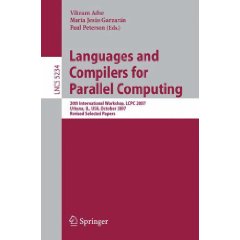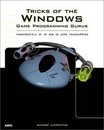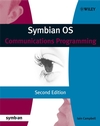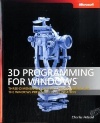作者:Bjarne Stroustrup
出版日期:1997
出版社:Addison Wesley
ISBN:0-201-88954-4
文件格式:PDF
As promised in the first edition of this book, C++ has been evolving to meet the needs of its users.
This evolution has been guided by the experience of users of widely varying backgrounds working
in a great range of application areas. The C++ usercommunity
has grown a hundredfold during the
six years since the first edition of this book; many lessons have been learned, and many techniques
have been discovered and/or validated by experience. Some of these experiences are reflected here.
The primary aim of the language extensions made in the last six years has been to enhance C++
as a language for data abstraction and objectoriented
programming in general and to enhance it as
a tool for writing highquality
libraries of userdefined
types in particular. A ‘‘highquality
library,’’ is a library that provides a concept to a user in the form of one or more classes that are
convenient, safe, and efficient to use. In this context, safe means that a class provides a specific
typesafe
interface between the users of the library and its providers; efficient means that use of the
class does not impose significant overheads in runtime
or space on the user compared with handwritten
C code.
This book presents the complete C++ language. Chapters 1 through 10 give a tutorial introduction;
Chapters 11 through 13 provide a discussion of design and software development issues; and,
finally, the complete C++ reference manual is included. Naturally, the features added and resolutions
made since the original edition are integral parts of the presentation. They include refined
overloading resolution, memory management facilities, and access control mechanisms, typesafe
linkage, c o n s t and s t a t i c member functions, abstract classes, multiple inheritance, templates, and
exception handling.
C++ is a generalpurpose
programming language; its core application domain is systems programming
in the broadest sense. In addition, C++ is successfully used in many application areas
that are not covered by this label. Implementations of C++ exist from some of the most modest
microcomputers to the largest supercomputers and for almost all operating systems. Consequently,
this book describes the C++ language itself without trying to explain a particular implementation,
programming environment, or library.
This book presents many examples of classes that, though useful, should be classified as
‘‘toys.’’ This style of exposition allows general principles and useful techniques to stand out more
The C++ Programming Language, Third Edition by Bjarne Stroustrup. Copyright ©1997 by AT&T.
Published by Addison Wesley Longman, Inc. ISBN 0201889544.
All rights reserved.
viii Preface to the Second Edition
clearly than they would in a fully elaborated program, where they would be buried in details. Most
of the useful classes presented here, such as linked lists, arrays, character strings, matrices, graphics
classes, associative arrays, etc., are available in ‘‘bulletproof’’ and/or ‘‘goldplated’’ versions from a
wide variety of commercial and noncommercial
sources. Many of these ‘‘industrial strength’’
classes and libraries are actually direct and indirect descendants of the toy versions found here.
This edition provides a greater emphasis on tutorial aspects than did the first edition of this
book. However, the presentation is still aimed squarely at experienced programmers and endeavors
not to insult their intelligence or experience. The discussion of design issues has been greatly
expanded to reflect the demand for information beyond the description of language features and
their immediate use. Technical detail and precision have also been increased. The reference manual,
in particular, represents many years of work in this direction. The intent has been to provide a
book with a depth sufficient to make more than one reading rewarding to most programmers. In
other words, this book presents the C++ language, its fundamental principles, and the key techniques
needed to apply it. Enjoy!
Acknowledgments
In addition to the people mentioned in the acknowledgements section in the preface to the first edition,
I would like to thank Al Aho, Steve Buroff, Jim Coplien, Ted Goldstein, Tony Hansen, Lorraine
Juhl, Peter Juhl, Brian Kernighan, Andrew Koenig, Bill Leggett, Warren Montgomery, Mike
Mowbray, Rob Murray, Jonathan Shopiro, Mike Vilot, and Peter Weinberger for commenting on
draft chapters of this second edition. Many people influenced the development of C++ from 1985
to 1991. I can mention only a few: Andrew Koenig, Brian Kernighan, Doug McIlroy, and Jonathan
Shopiro. Also thanks to the many participants of the ‘‘external reviews’’ of the reference manual
drafts and to the people who suffered through the first year of X3J16.
Murray Hill, New Jersey Bjarne Stroustrup






 评论 (3)
评论 (3) 